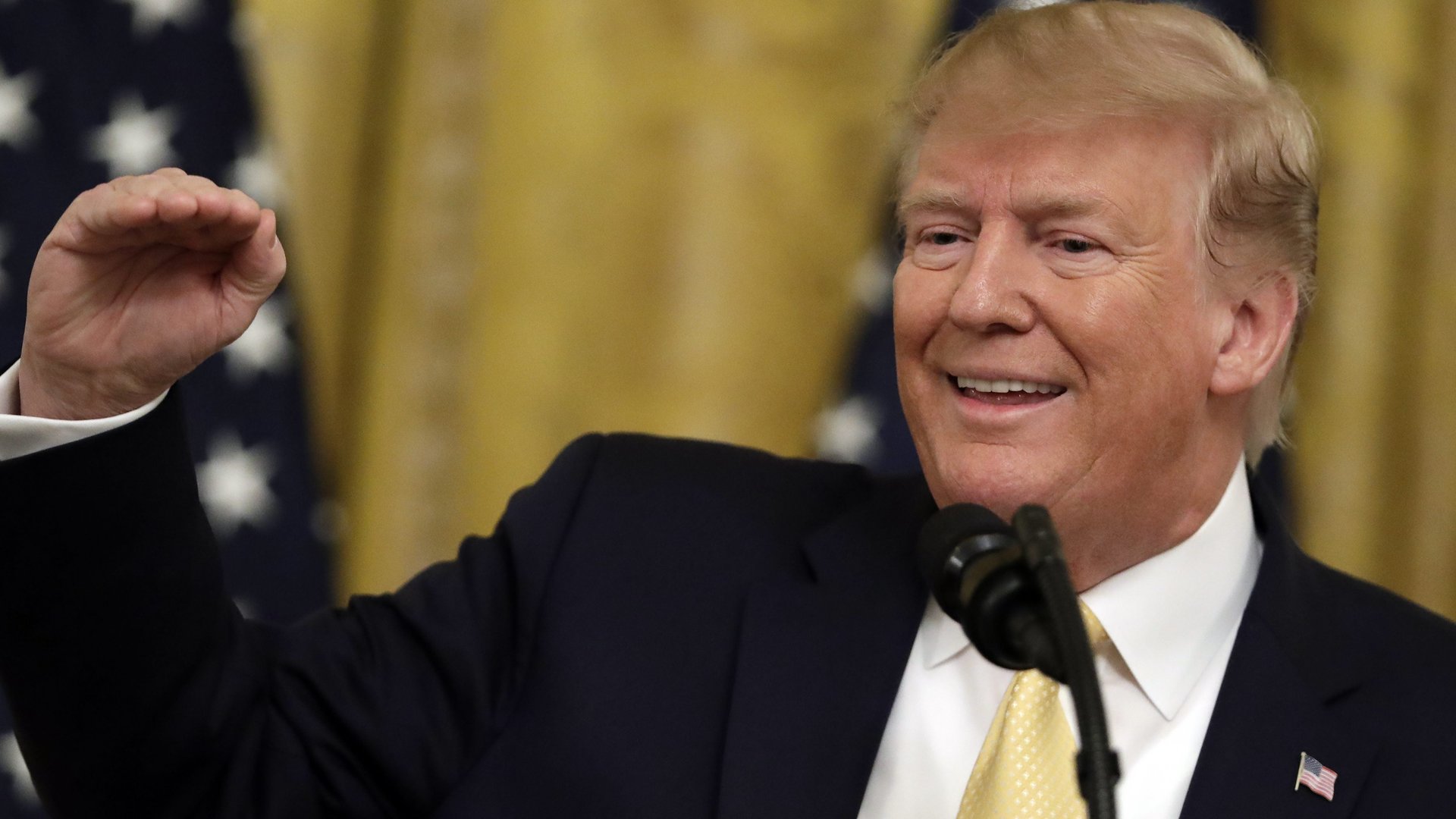Data show Trump is right, fewer people like his tweets now
US president Donald Trump spent a lot of time during a White House’s “social media summit” this week complaining that his tweets don’t get the same engagement that they used to.


US president Donald Trump spent a lot of time during a White House’s “social media summit” this week complaining that his tweets don’t get the same engagement that they used to.
“It used to go up, it would say 7,000, 7,008, 7,017, 7,024, 7,032, 7,044, right? Now it goes 7,000, 7,008, 6,998,” he said. “Does anyone know what I’m talking about with this? I never had that before. I used to watch it. It would be like a rocket ship when I put out a beauty.”
Trump is right, a Quartz analysis of his personal Twitter account data shows. Engagement with his tweets has plummeted since the beginning of this year:
Quartz defined “engagement” here by the number of likes and retweets per tweet. After normalizing that by factoring in the number of tweets each day, the analysis shows that engagement on Twitter with Trump’s original tweets (nothing he retweeted) decreased significantly in the first half of 2019.
Since his inauguration, the president’s Twitter followers on his personal account have jumped from 47 million to nearly 62 million. Given this gain, the recent decrease in engagement is particularly significant, and surprising.
Several factors could be contributing to this drop.
Shadow bans and Twitter’s algorithm
Trump repeated a theory July 10 that has grown popular in right-wing circles: Twitter and other social media sites are “shadow-banning” him and other far-right users because the companies favor Democrats. He accused the companies of “a terrible bias.”
“We had censorship like nobody had any understanding and nobody can believe,” he added.
Twitter “certainly” doesn’t shadow ban “based on political viewpoints or ideology,” the company said last year, when Trump made a similar accusation. But its algorithm might rank some users lower than others:
We do rank tweets and search results. We do this because Twitter is most useful when it’s immediately relevant. These ranking models take many signals into consideration to best organize tweets for timely relevance. We must also address bad-faith actors who intend to manipulate or detract from healthy conversation.
Twitter defines bad-faith actors as people “who intend to manipulate or divide the conversation,” and identifies them using three factors:
- Specific account properties that indicate authenticity (e.g. whether you have a confirmed email address, how recently your account was created, whether you uploaded a profile image, etc)
- What actions you take on Twitter (e.g. who you follow, who you retweet, etc)
- How other accounts interact with you (e.g. who mutes you, who follows you, who retweets you, who blocks you, etc)
Many of the social media personalities invited to the White House event are “trolls,” people who deliberately spread threats, hate speech, and false information. Based on Twitter’s definition of who it ranks lower in searches, it makes sense that these people may feel that they’re getting less noticed on Twitter than accounts that don’t spew incendiary remarks.
Twitter’s press office didn’t respond to questions about Trump’s Twitter engagement.
Twitter’s bot cleanup
In July of 2018, Twitter said it would start purging automated bots that automatically retweet and like other Tweets. Some companies and individuals immediately lost millions of followers; Trump lost over 300,000. That bot cleanup continued for months.
Trump’s Twitter account has traditionally had a greater percentage of bots and fake accounts following it than other politicians. Russian-linked Twitter bots retweeted Trump tweets about half a million times during the final months of the 2016 election, Twitter said in a January 2018 submission to Congress. In contrast, they re-tweeted Hillary Clinton tweets about 50,000 times in the same time period.
A Sparktoro examination of Trump’s Twitter followers last October found that 61% were “bot, spam, propaganda, and inactive accounts,” a significantly higher percentage than any other American politician the company could find.
Twitter CEO Jack Dorsey told Trump during a White House meeting in April that he may have lost followers because of the company’s cleanup of bots and fake accounts. Judging by the president’s remarks July 10, that message doesn’t appear to have registered.
Just tired of Trump
There is another factor that the White House may not be considering. Trump uses his personal Twitter account to hurl abuse at Democrats, presidential candidates like Joe Biden, media that doesn’t present him in a flattering way, and foreign leaders.
A Pew Research poll published in June suggests Americans are just exhausted by the steady stream of abuse. A huge majority (85%) of Americans say that the tone and nature of political debate has become more negative in recent years. And 55% blame Trump, agreeing he “has changed the tone and nature of political debate in this country for the worse.”
“Sizable majorities,” Pew notes, “say Trump’s comments often or sometimes make them feel concerned (76%), confused (70%), embarrassed (69%) and exhausted (67%).” Republicans are particularly exhausted by Trump news, an earlier Pew poll found.